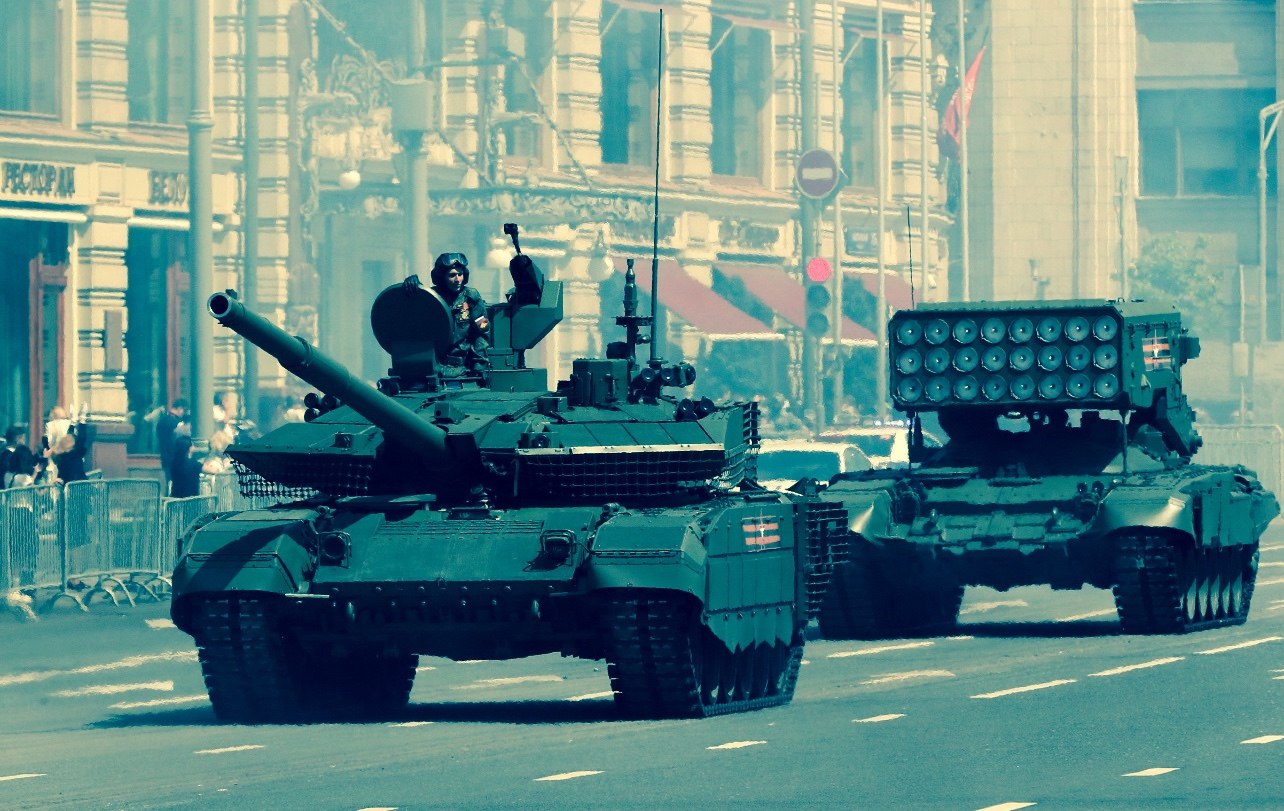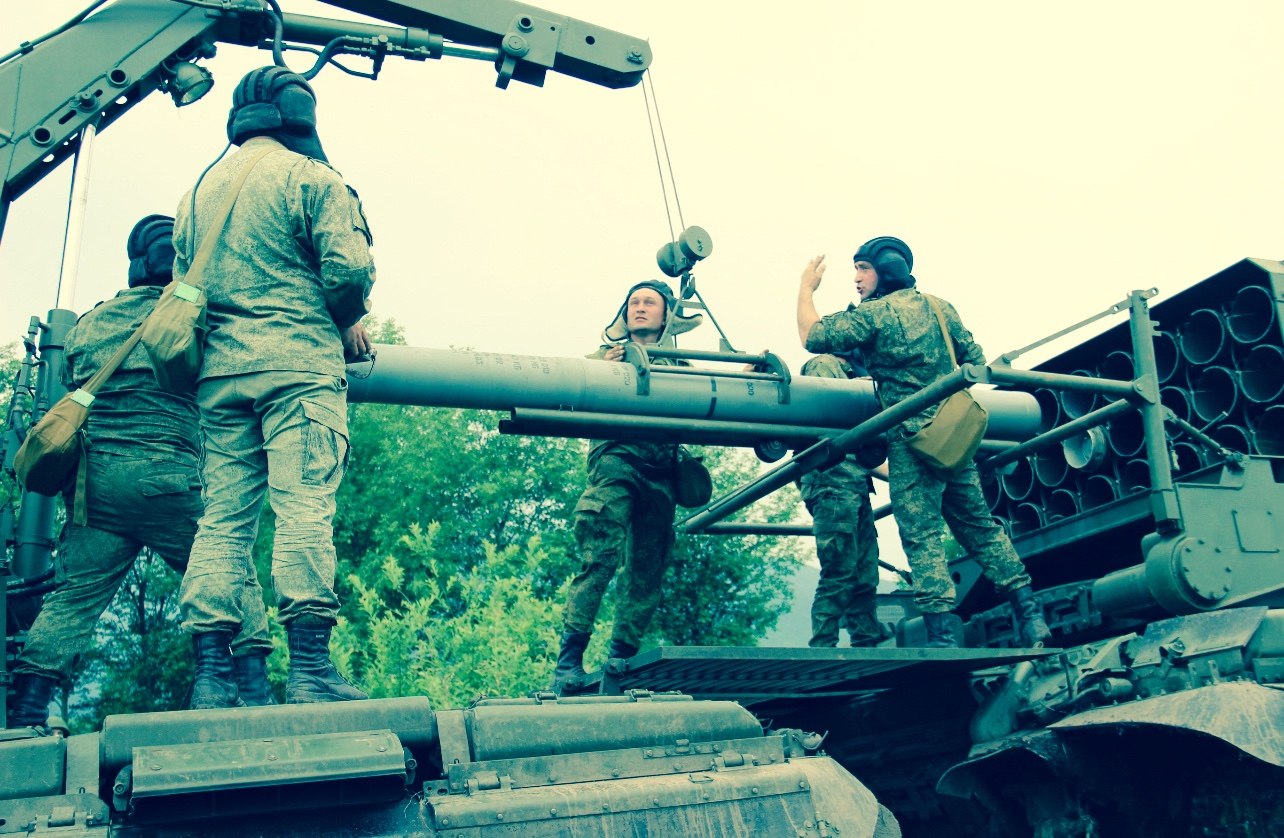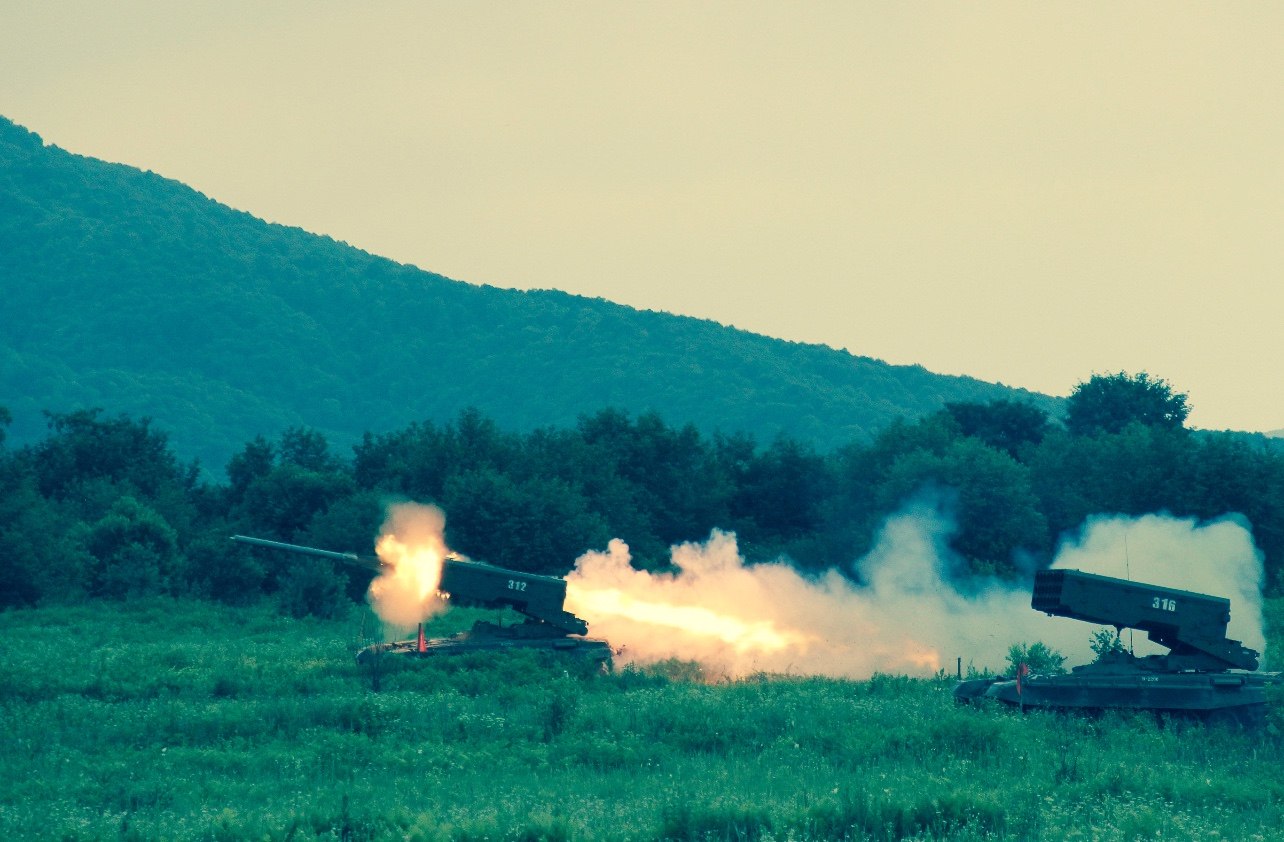The TOS-1A heavy flamethrower system is meant to take on fortified enemy positions. Used against civilians, it would almost certainly amount to a war crime.

One of Russia’s most deadly and controversial land weapons is the TOS-1A heavy flamethrower.
- One of Russia’s most deadly and controversial land weapons is the TOS-1A heavy flamethrower.
- It uses rockets with thermobaric weapons to destroy entrenched enemy troops.
- Used in Ukraine’s cities, the weapons would do massive damage to military and civilian targets alike, including ordinary people taking shelter from the fighting.
As Russia’s troops grow increasingly bogged down in their invasion of Ukraine, observers are concerned the Russian military could unleash one of its most devastating non-nuclear weapons in civilian areas: the TOS-1A heavy flamethrower system. Originally designed to destroy fortified NATO targets, the TOS-1A is designed to create shattering waves of searing heat and overpressure, killing enemy troops inside bunkers and other reinforced targets.
The Russian Ground Forces have, until Monday, refrained from using heavy artillery in Ukraine’s urban areas. This has been an impediment to typical Russian combat operations, as Moscow’s military doctrine usually prescribes a liberal amount of artillery to batter the enemy before a ground assault. Although there have been numerous sightings of heavy Russian artillery pieces rolling into Ukraine—and reports that Moscow has already used thermobaric weapons against civilians—there have been no official confirmations yet.
All of that may be about to change. Artillery bombardments of Ukrainian cities and towns are becoming increasingly common, with evidence of BM-30 Smerch 300-millimeter rockets, Grad-P 122-millimeter rockets, and other salvo-fired rocket systems in active use. The worst of all, however, is the TOS-1A. As the weapon’s state-owned exporter states in its marketing materials: “I will create hell for the enemy.” No lie detected.
The TOS-1A is a weapon without equivalents in Western armies. TOS-1A and weapons like it are called “thermobaric” due to their use of extreme heat and pressure to incapacitate or kill. The Soviet Union first developed the TOS-1A in the 1970s as a weapon to fulfill the role of a flamethrower, destroying enemy troops in bunkers. At the time, most armies were shifting away from the traditional role of a flame-spurting flamethrower, but there was still a need for a weapon that could somehow reach through the narrow firing ports of a bunker or fighting position to neutralize the troops inside.

The original vehicle, TOS-1, was designed to carry 30 rockets with a 220-millimeter diameter. Each rocket was packed with inert—but flammable—metal particles, dispersed in a cloud-like pattern at the target. Ideally, the airborne metallic particles filter into hard-to-reach places through firing ports in a bunker, crew hatches in armored vehicles, and cave entrances. The rocket then detonates the cloud, creating a deadly fireball.
The explosion also has a powerful secondary effect: the generation of powerful positive, then negative, pressure waves. The quick succession of positive and negative pressure waves is why some call thermobaric weapons “vacuum bombs.” The pressure differential has a devastating effect on buildings, structures, and the human body—particularly the lungs. The U.S. Air Force’s Mother of All Bombs (MOAB), the world’s largest conventional bomb, similarly kills through overpressure, and in 2017 was dropped on an ISIS cave complex in Afghanistan.

The modern version of TOS-1 is TOS-1A, also known as Solntsepek (Sun). The weapon still uses 220-millimeter rockets, but only carries 24 at a time. According to Rosoboronexport, the state company that markets and coordinates international arms sales, TOS-1A can launch its rockets just 90 seconds after coming to a full stop. It can fire all 24 rockets in six seconds, and a single vehicle can savage 40,000 square meters, the equivalent of almost ten acres. In addition to the Russian Ground Forces, armies in Algeria, Armenia, Azerbaijan, Iraq, Jordan, Kazakhstan, Saudi Arabia, and Syria also operate TOS-1As.
Here’s a video that Russia’s Ministry of Defense uploaded to YouTube in 2019, showing the loading and firing of TOS-1As during an exercise:
TOS-1A’s effects against soldiers are horrifying enough, but against civilians it has the potential for mass slaughter. The dangers to unprotected civilians are obvious, but it can also damage (or even collapse) non-military buildings, killing or injuring those taking shelter inside.
Two human rights organizations—London’s Amnesty International and New York City’s Human Rights Watch—have both claimed that Russia “appeared to have used widely banned cluster munitions, with Amnesty accusing them of attacking a preschool in northeastern Ukraine while civilians took shelter inside,” according to a February 28 report from Reuters, but those claims have not yet been verified.

TOS-1A will devastate civilian populations in Ukraine if Russia uses it against them. Already, Russian rockets are raining down in urban areas in Kharkiv, a city in the eastern part of the country that has managed to hold out against Russian forces despite overwhelming odds. If Putin grows desperate, he might order his military to deploy TOS-1A and similar rocket systems as terror weapons in an attempt to break Ukraine’s morale.
While such actions might have their intended effect, it would also broadly be considered a war crime, and land Putin and his administration in even deeper international trouble than it’s in now.
BY KYLE MIZOKAMI MAR 1, 2022
